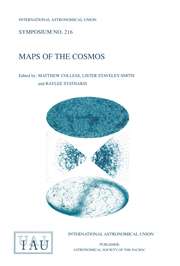No CrossRef data available.
Article contents
High-Redshift Galaxies
Published online by Cambridge University Press: 23 September 2016
Abstract
Mapping the history of star formation requires combining observations at many wavelengths. The most dramatic episodes of star formation occurred in high-redshift (z > 1) galaxies obscured by dust. These galaxies can be seen at submillimeter wavelengths. While these episodes clearly constitute much of the star formation in the universe, we still do not know the redshift distribution. Although progess has been made in determining the nature of the brightest members of the submillimeter population, these galaxies comprise only a tiny fraction of the submillimeter extragalactic background light. Optical star formation, by contrast, is well mapped but hard to interpret because of the problems of extinction. At recent times there is still substantial star formation, but it primarily takes place in small galaxies. This cosmic downsizing is paralleled by similar evolution in the properties of AGNs.
- Type
- Session VI: The Distant Universe
- Information
- Symposium - International Astronomical Union , Volume 216: Maps of the Cosmos , 2005 , pp. 309 - 324
- Copyright
- Copyright © Astronomical Society of the Pacific 2005


